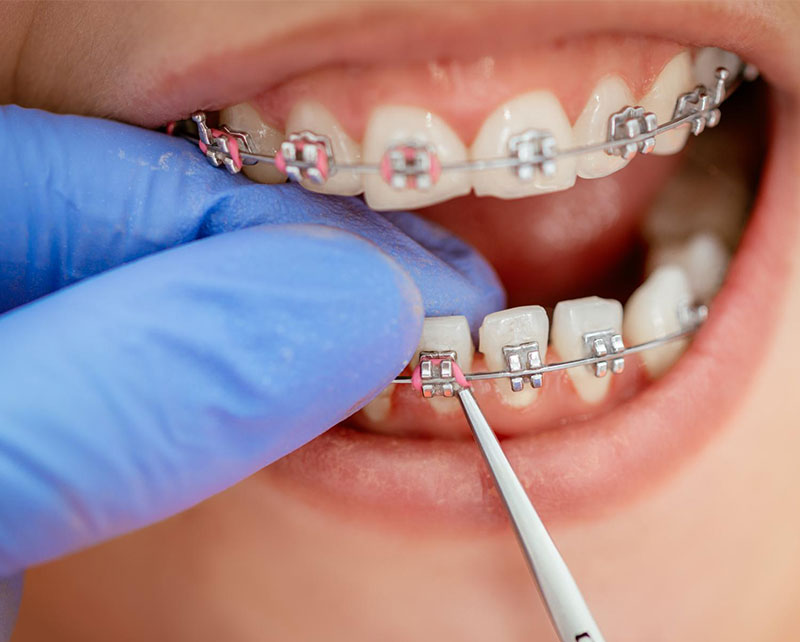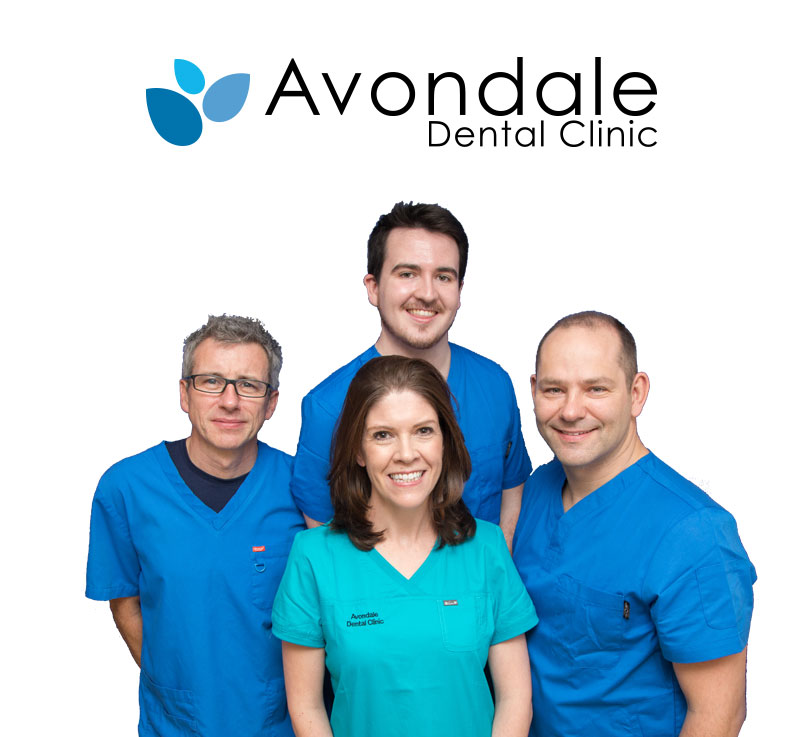Fixed braces
What are Braces?
Fixed braces consist of brackets and wires which align your teeth. Traditionally fixed braces were metal but they can be porcelain or other materials which can make them appear less obvious. The patient, in conjunction with Dr Hone can choose which is the best choice for you. Fixed braces are used with both adults and younger patients. They are a very accurate and reliable way to straighten teeth. These type of braces were traditionally known as train tracks. Among the younger patients they sometimes can be seen as a fashion accessory! Compliance is not a problems as the patient cannot remove the braces and so the treatment time is more predictable than with aligners.

When is orthodontic Treatment needed?
We have a wide range of orthodontic treatments to suit your needs.
The main reasons to undergo orthodontic treatment are:
- Crooked teeth
- Small mouth with overcrowding teeth, causing orthodontic issues.
- Issues sleeping due to bute and jaw issues.
- Face not forming correctly
Treatment Time
The degree of movement required dictates the treatment time. Generally the treatment time could be anything from 6 months up to two years. The patient generally needs to attend Dr Hone every 4-6 weeks to have the braces reviewed brackets / wires replaced or tightened.
Patient experience
Initially there is a period required to get used to the braces. Occasionally your lips may feel a little irritated but once accustomed to the braces patients hardly know they are there. We would recommend seeing our hygienist Ms Deirdre Maher regularly while you are in your fixed braces as it can require a little more effort to keep your teeth and gingival tissues clean. It is our practice to recommend mouth washes such as Fluoride mouthwashes in order to prevent tooth decay underneath the braces. Throughout the period when you are in your braces it is advised to attend your general dentist for routine check-ups as the orthodontist concerns himself with the position of the teeth, but it is your general dentist who continues to ensure there is no tooth decay or gum disease.
Treatment Process
Normally, treatment lasts up to eighteen months but varies from patient to patient. It’s important that you come in to see us, and we can analyse your situation and suggest the best form of treatment for you.
Variations of the treatment depend on:
- How severe is the problem?
- How much room is available in the mouth?
- What distance must the teeth in question be moved?
- What are the conditions of the gums, teeth, and bone?
- How closely does the patient follow care instructions?
- Are there any other issues such as problems sleeping, breathing, eating
- Patient meets the orthodontist for a consultation and general exam. This will include panoramic x rays, cephalometric x rays, a possible Cone Beam CT scan, and dental impressions of teeth and bite.
We will then evaluate all this information, and come up with a viable treatment plan to be discussed with both child and parents. The actual process of inserting the braces is as follows:
- The orthodontist will insert separators in the back teeth to prepare for banded braces.
- Next, the teeth will be cleaned and polished just like a hygienist would.
- A conditioner is placed on the teeth, then rinsed, and then a primer is painted into the teeth.
- Then, the bonding cement is placed on the back of the braces and placed on the teeth.
- A curing light may be used to affix the cement if needed.
- Periodically, adjustments will have to be made to the braces and wires attached. There will be many different appointments during the treatment process.
- Small orthodontic rubber bands may be utilized to help guide the teeth in the desired location.
- At the end of the treatment process, the orthodontist will remove the braces by carefully squeezing the bracket, so that the bonding agent will loosen, and the brackets will drop off.
- The orthodontist will remove any bonding debris from teeth.
What are the benefits of orthodontic treatment?
Along with beautiful, straightened teeth and a lovely smile, there are many benefits to having straight teeth.
Teeth which are not straight can interfere with proper chewing, which later effects proper digestion and wellbeing.
Keeping your teeth and mouth clean can be difficult and ineffective with crooked teeth. When your teeth are not straight there will be hard-to-reach spaces, and if these spaces remain unclean, gum disease, tooth decay or even tooth loss can occur.
After Effects
- Throughout the process of braces treatment, some discomfort and minor pain can be expected, and over-the-counter pain medications will help ease the discomfort.
- Gums may be slightly inflamed, but this will diminish over a few days of proper brushing and flossing.
- The orthodontist may give you a retainer to wear at night to keep the teeth from moving, and to keep the teeth in their place.
Retainers / Retention
At the end of the treatment period when your braces are removed (which is a joyous occasion) Dr Hone will provide you with retainers. There are several types of retainers -some of which are bonded to the inside surfaces of your teeth, and some which are only worn at night. The type of retainer is dependent on the stability of the final position of your teeth. Dr Hone will advise you as to the what is the best retainer for you. Retention is considered lifelong. There are many adults who had orthodontic treatment as children or teenagers who are back in braces as adults as they did not wear their retainers
Did you know
Braces are devices used in orthodontics that align and straighten teeth and help position them with regard to a person’s bite, while also aiming to improve dental health. Through orthodontic treatment, problems like crooked or crowded teeth, overbites or underbites, incorrect jaw position and disorders of the jaw joints are corrected, which if left untreated, can result in tooth decay, gum disease, headaches and earaches, as well as speaking, biting or chewing problems.
Percent of patients who undergo braces treatment have to undergo repeat treatment because they fail to wear a retainer for the time recommended by their orthodontist.
(webmd.boots.com)
Contact us Today!
If you are you looking for more information regarding orthodontic treatment, then simply fill in the form below, and we will contact you as soon as possible. Alternatively, you can call us on 01 2014180









